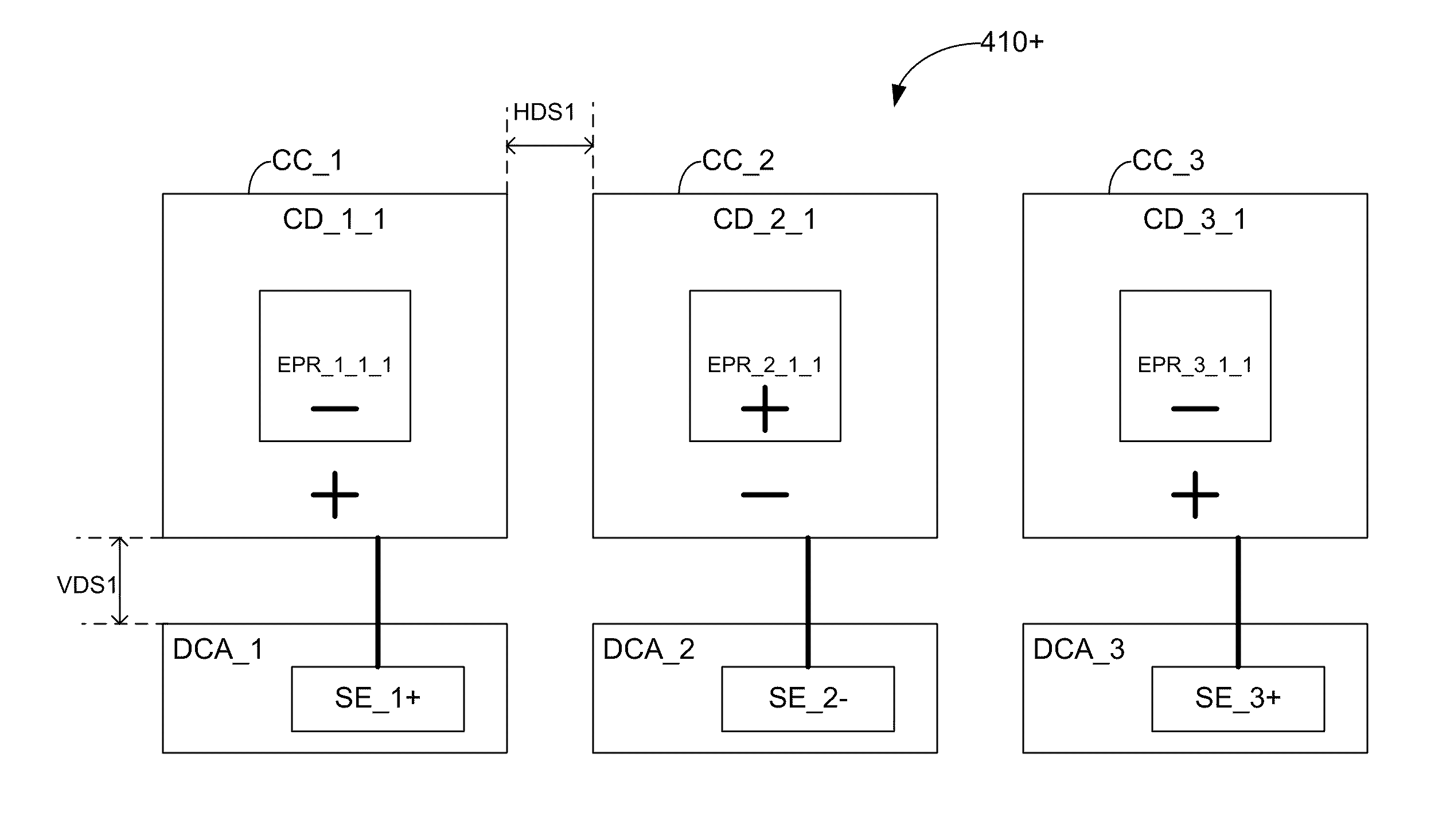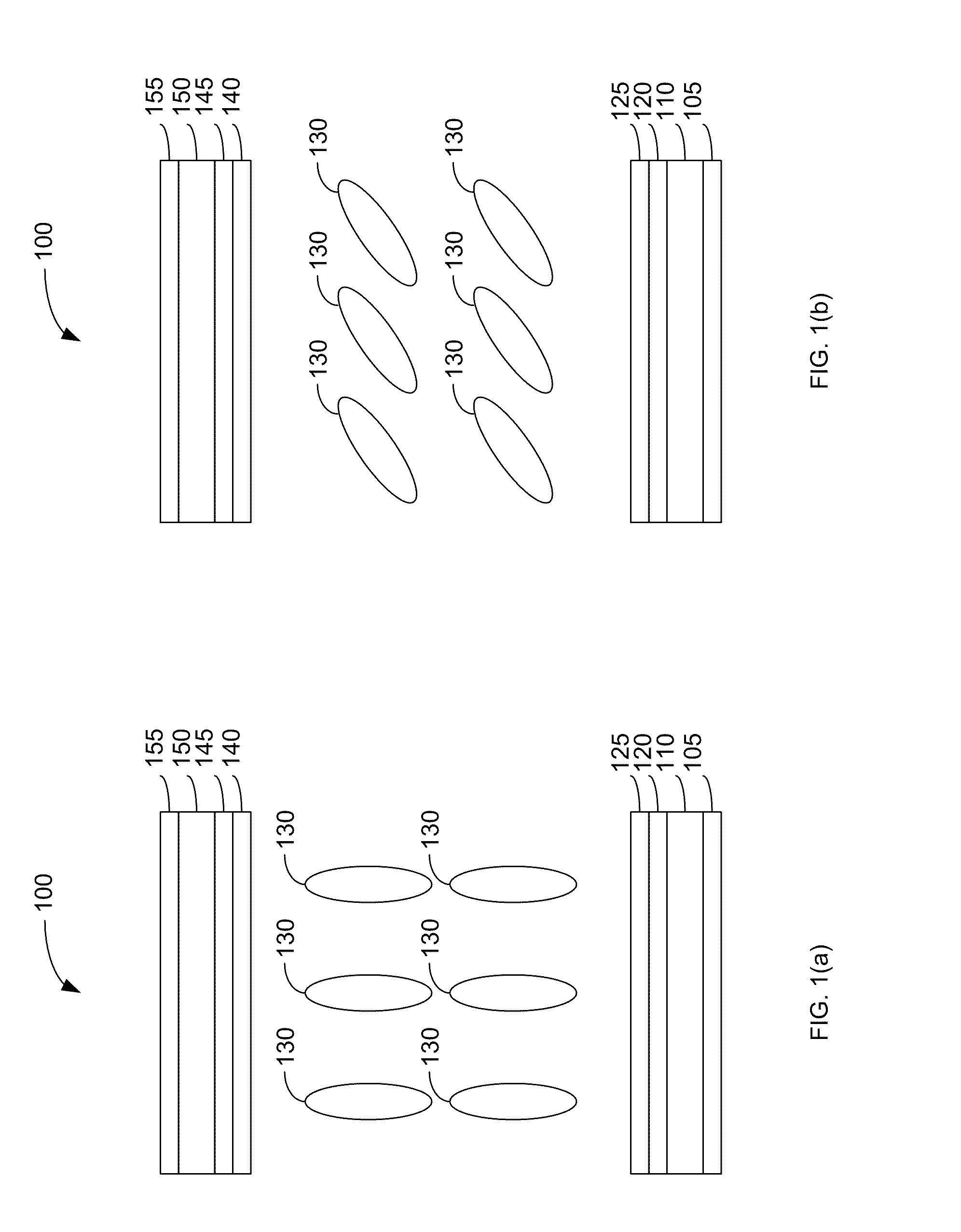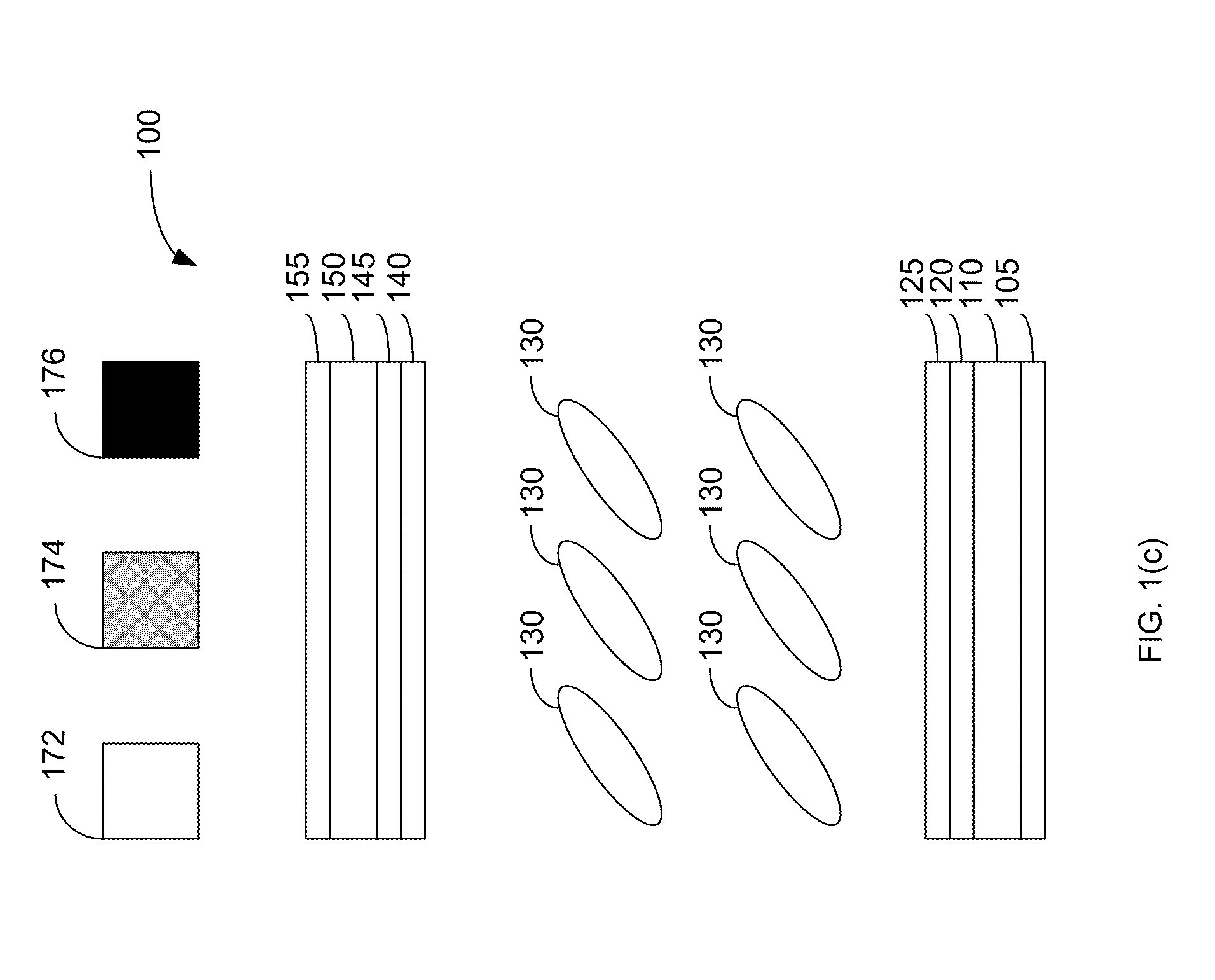Liquid Crystal Displays Having Color Dots With Embedded Polarity Regions
a technology of color dots and liquid crystal displays, applied in the field of liquid crystal displays, can solve the problems of low contrast ratio, low viewing angle, and side of the lcd that would not receive a high quality image, and achieve the effects of enhancing fringe field effects, reducing touch mura effects, and enhancing viewing angles
- Summary
- Abstract
- Description
- Claims
- Application Information
AI Technical Summary
Benefits of technology
Problems solved by technology
Method used
Image
Examples
Embodiment Construction
[0056]As explained above, conventional vertically aligned LCDs are very susceptible to touch mura effects caused by physical disturbances to the liquid crystals. However, vertically aligned LCDs in accordance with the principles of the present invention use color dots that have embedded polarity regions (EPR) that enhance additional lateral fringe fields that help restore the liquid crystals to their proper orientation after a physical disturbance. Thus, vertically aligned LCDs in accordance with the present invention can quickly resolve touch mura effects caused by physical disturbance of the liquid crystals.
[0057]FIGS. 4(a) and 4(b) show different dot polarity patterns of a pixel design 410 (labeled 410+and 410− as described below) in accordance with one embodiment of the present invention. In actual operation a pixel will switch between a first dot polarity pattern and a second dot polarity pattern between each image frame. For clarity, the dot polarity pattern, in which the firs...
PUM
 Login to View More
Login to View More Abstract
Description
Claims
Application Information
 Login to View More
Login to View More - R&D
- Intellectual Property
- Life Sciences
- Materials
- Tech Scout
- Unparalleled Data Quality
- Higher Quality Content
- 60% Fewer Hallucinations
Browse by: Latest US Patents, China's latest patents, Technical Efficacy Thesaurus, Application Domain, Technology Topic, Popular Technical Reports.
© 2025 PatSnap. All rights reserved.Legal|Privacy policy|Modern Slavery Act Transparency Statement|Sitemap|About US| Contact US: help@patsnap.com



